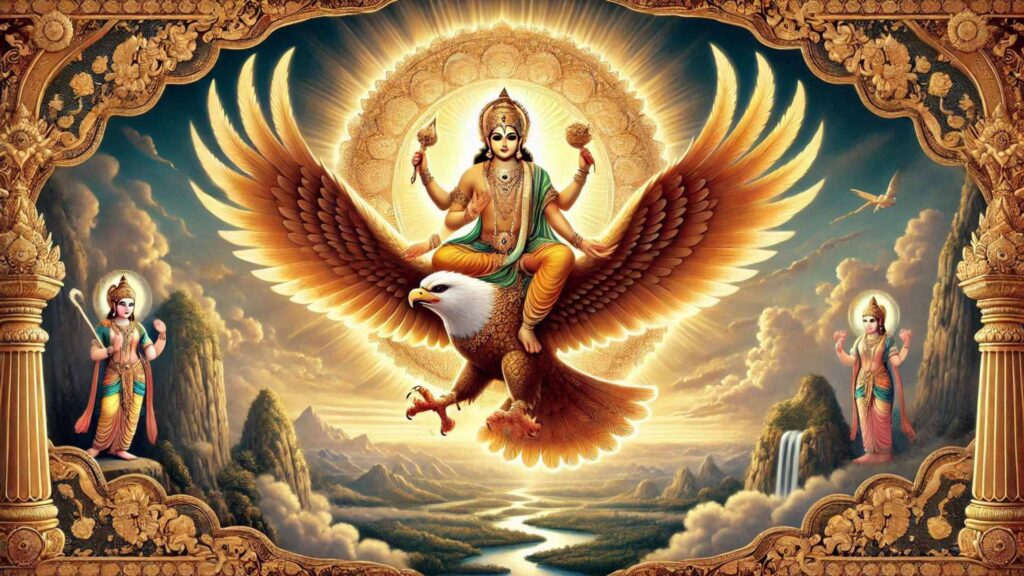Sacred Elements in Hinduism: The Spiritual and Cultural Significance of Animals and Birds
Sacredness in Hinduism stems from a belief in interconnectedness, where every entity in the universe—be it living or non-living—holds spiritual significance. Among the diverse symbols, animals and birds play a pivotal role in conveying divine attributes, philosophical teachings, and moral lessons.
Read More About sacred texts
For instance, the cow is venerated as a nurturing mother; the elephant embodies wisdom and remover of obstacles (Ganesha); the monkey symbolizes devotion (Hanuman); the snake is a force of transformation (Shiva’s adornment); Garuda represents speed and divine protection (Vishnu’s mount); and the peacock signifies beauty and valor (Kartikeya’s steed).
This article dives deep into the historical, spiritual, and cultural importance of these sacred beings, their origins in Hindu mythology, and how they are revered in modern practices.
1. Historical Background
The Cow:

Revered since the Vedic period, cows are called “Kamadhenu,” the wish-fulfilling divine cow. Scriptures like the Mahabharata and Rig Veda depict cows as symbols of wealth and prosperity.
- Regional Variations: In states like Gujarat and Uttar Pradesh, cow sanctuaries and temples emphasize their sacredness.
- Mythology: Lord Krishna’s association with cows in Vrindavan strengthens their spiritual stature.
The Elephant:

Associated with Lord Ganesha, elephants were historically revered in royal and temple rituals. They symbolized strength and auspiciousness in Mauryan and Gupta art.
- Cultural Context: Ganesha’s image evolved through centuries, from tribal to mainstream Hindu iconography.
The Monkey:

Hanuman, the monkey god, became a pivotal figure during the Ramayana era. His stories highlight valor, loyalty, and devotion.
- Epic Narratives: Hanuman’s feats in the Ramayana, like carrying the Sanjeevani herb, are cornerstones of Hindu mythology.
The Snake:

Snakes, linked to Lord Shiva and Vishnu (as Ananta Shesha), appear in both fearsome and protective roles. They symbolize eternity, rebirth, and cosmic balance.
- Texts & Temples: Temples in South India, such as the Mannarasala Nagaraja Temple, uphold serpent worship traditions.
Garuda:

Garuda, the divine eagle and Vishnu’s mount, represents swift deliverance from evil. Stories from the Mahabharata and Vishnu Purana highlight Garuda’s fierce devotion to Dharma.
The Peacock:
Representing Lord Kartikeya, the peacock reflects beauty, bravery, and the ability to overcome egos. In Tamil Nadu, peacock feathers often adorn temples of Murugan.
2. Spiritual Significance
Religious Importance:
Each sacred being embodies divine attributes:
- Cow: Nourishment, abundance, and life force.
- Elephant: Wisdom and remover of obstacles.
- Monkey: Selfless service and devotion.
- Snake: Kundalini energy and cosmic cycles.
- Garuda: Protection and spiritual elevation.
- Peacock: Transcendence of desires and victory over ego.
Symbolism:
These elements personify core Hindu philosophies: dharma (duty), karma (action), and moksha (liberation). For instance:
- Snakes coiled around Shiva signify the cyclical nature of time.
- The peacock feathers in Krishna’s crown depict infinite beauty and protection.
Connection to Deities:
- Cow: Linked to Krishna and Kamadhenu.
- Elephant: Lord Ganesha, remover of obstacles.
- Monkey: Hanuman, the epitome of devotion.
- Snake: Vishnu (Shesha) and Shiva (Nagendra).
- Garuda: Vishnu’s vahana.
- Peacock: Kartikeya’s steed.
3. Practical Application
Worship and Rituals:
- Cow: Milk, ghee, and dung are integral to pujas and yajnas. Cow shelters (gaushalas) are sanctified spaces.
- Elephant: Temples in Kerala feature caparisoned elephants in grand processions.
- Monkey: Hanuman Chalisa recitation brings blessings of courage.
- Snake: Nag Panchami celebrates serpents with offerings of milk.
- Garuda: Temples of Vishnu showcase Garuda statues at entrances.
- Peacock: Kartikeya devotees in Tamil Nadu offer peacock feathers during festivals.
Modern Adaptations:
Eco-friendly worship practices, like clay idols of Ganesha or digital pujas, align tradition with contemporary needs.
4. Cultural Impact
Art and Literature:
- Cow: Depictions in Madhubani and Tanjore paintings.
- Elephant: Sculptures in Ajanta and Ellora caves.
- Monkey: Hanuman’s tales inspire theatrical adaptations like Ramlila.
- Snake: Nagas feature in tribal and classical Indian art.
- Garuda: Represented in temple murals and royal insignias.
- Peacock: Celebrated in dance forms like Bharatanatyam.
Festivals:
- Cow sanctity is highlighted during Govardhan Puja.
- Elephants feature prominently in Thrissur Pooram.
- Hanuman Jayanti commemorates Hanuman’s birth.
5. Conservation and Preservation
Challenges:
- Urbanization endangers habitats of peacocks and snakes.
- Illegal slaughter of cows undermines traditional values.
Preservation Efforts:
- Cow Protection: NGOs like Akshaya Patra ensure sustainable care.
- Elephants: Wildlife conservation projects in Kerala focus on temple elephants.
Future Outlook:
By blending traditional reverence with environmental conservation, communities can ensure the survival of these sacred beings.
6. Expert Insights
Quotes from Religious Scholars:
- “The cow represents the Earth’s nurturing aspect, a giver of life.” – Swami Vivekananda.
- “Ganesha’s elephant head signifies wisdom beyond human comprehension.”
Scientific Perspectives:
- Cow Products: Cow-derived substances have antimicrobial properties.
- Snake Venom: Used in medicine, highlighting its transformative potential.
7. Conclusion
The sacred animals and birds in Hinduism are more than just symbols; they are profound embodiments of spiritual values, guiding humanity toward compassion, discipline, and harmony with nature.


